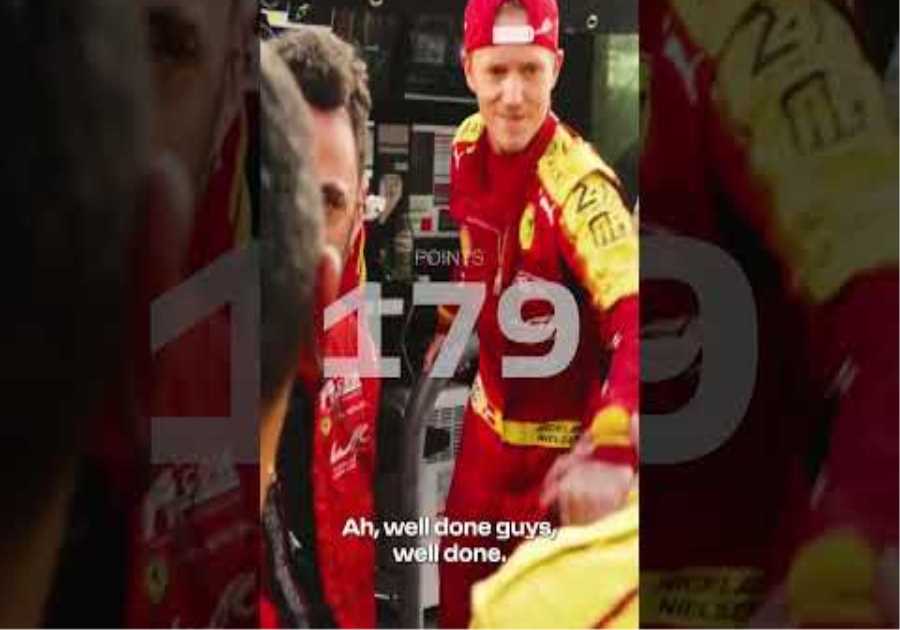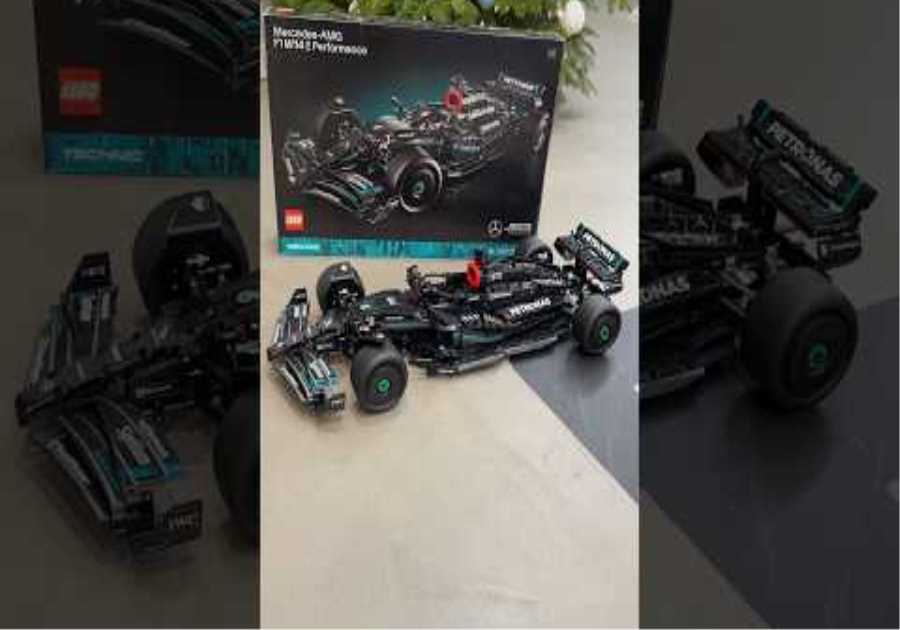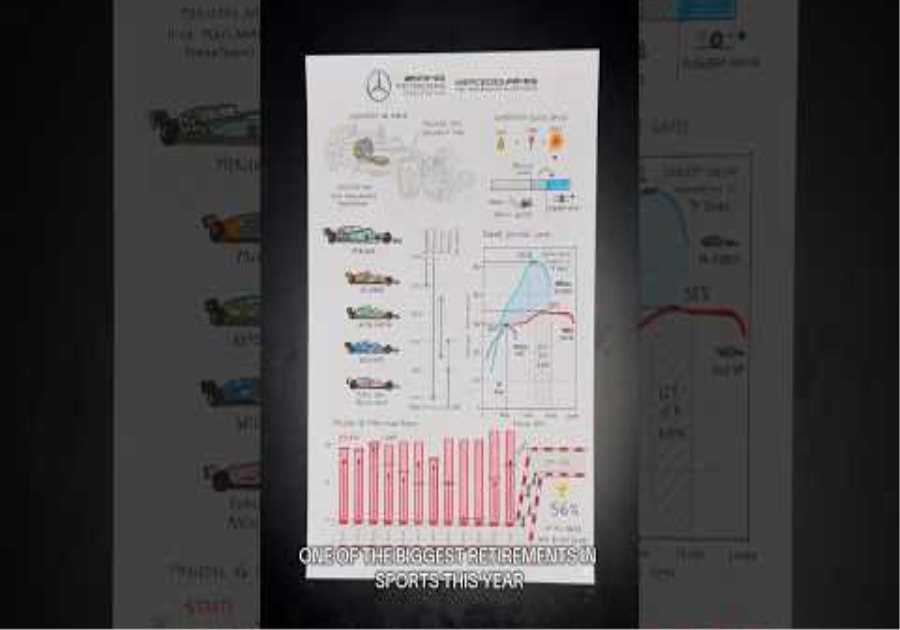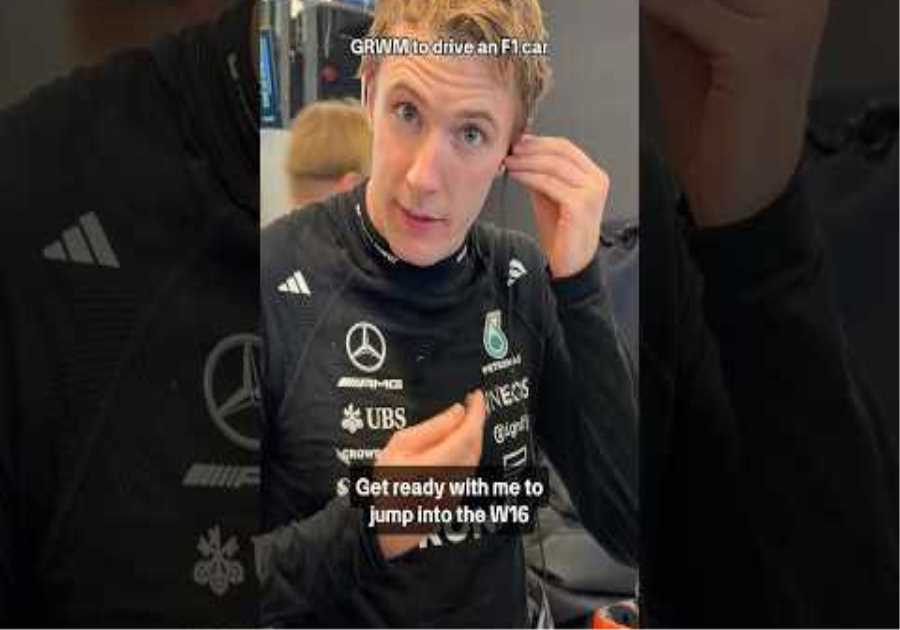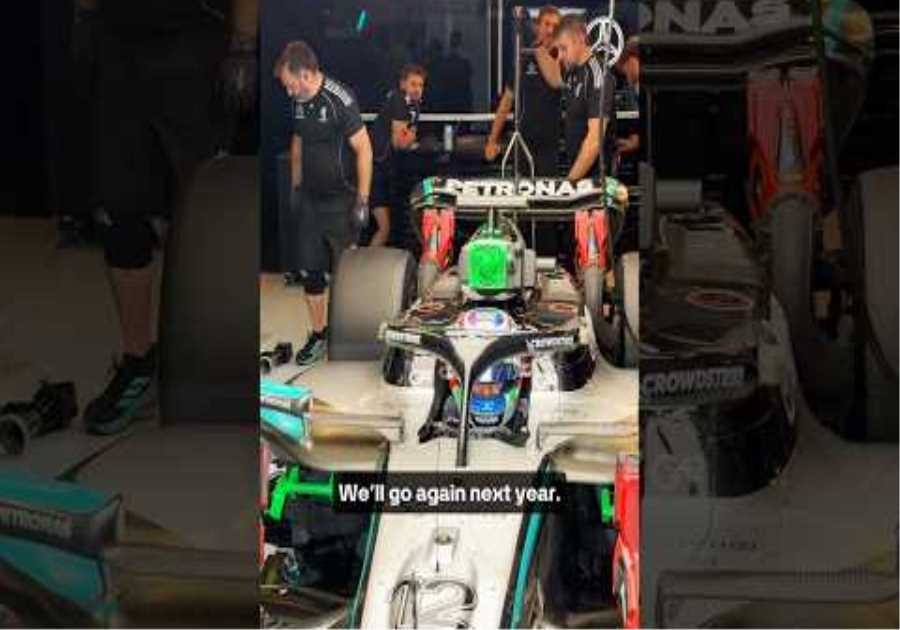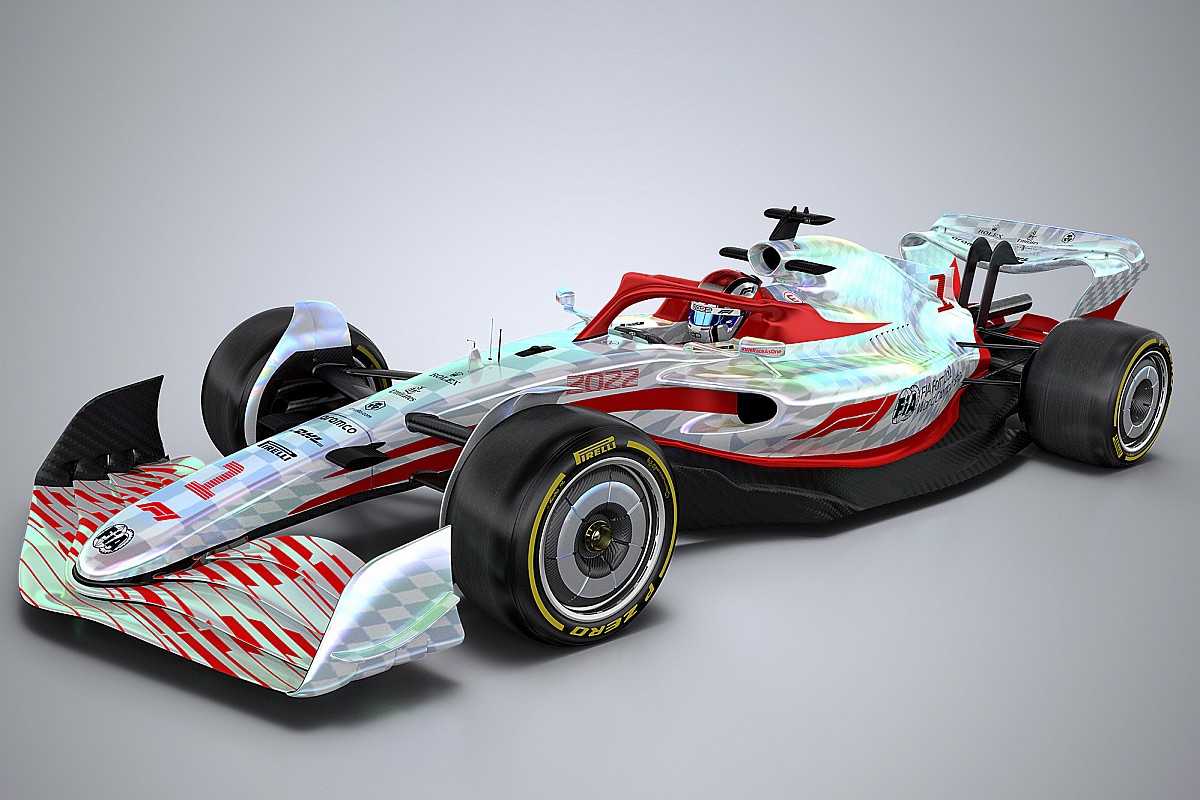
But while a show car designed by FOM last year gave us a glimpse of the basic shape the new designs will take, the teams have been busy developing their own ideas based on what they think suits them could give them an advantage over their rivals.
That being said, F1’s designers have been more limited in some areas because the FIA doesn’t want ideas about creating closer races to be immediately rolled back.
Here we take a close look at the rules and focus of the new cars for 2022.
front wing concept
The front wing design leads the way in this regard, removing some of the liberties from previous eras of regulation and simplifying the overall design.
Since 2009, teams have used the outer section of the front wing to create “outwash” by forcing airflow over and around the front tire to alter the turbulence it creates and direct it away from the car.
During this time, teams have developed several additional methods to further solve this turbulence problem, with aerodynamic shaping and furniture on the front wing, front brake ducts, blown axles and rim design, all of which help improve performance.
In recent years, teams have had many of these design elements stripped away by the FIA, but fundamentally they were still able to incorporate aspects of it that helped improve performance.
Changing the car’s overall aerodynamic design philosophy for 2022 somewhat mitigates the need to strive for these methods, but the regulations have been formulated to discourage them no matter what.
For example, the neutral center section of the front wing, introduced in 2009 and intended to contribute to tighter races but inadvertently creating an incredibly strong aerodynamic resource for teams to utilize, has been removed.
Instead, teams must work without the Y250 swivel and attach the wing profiles to the main body of the nose.
The 2022 Formula 1 car launch event on the Silverstone grid. Nose and front wing detail
Photo by: Mark Sutton / Motorsport Images
The number of airfoils was reduced even further, from five to four elements, and their geometry was severely restricted across the span. At the outboard end, the shape of the endplate is also severely constrained, forming the raised triangular outer section of the wing, which may also carry a small canard on the outside, but is also limited in its design freedom.
The strakes that normally decorate the underside of the wing and help redirect airflow are also missing, having been removed because they can help create outdraft.
brakes and wheels
As part of a gentle rollback to the regulations we’ll be racing by this season, the governing body has made numerous changes to simplify cars in 2019.
One of these was the front brake line assembly, but as you’d expect things were taken a step further for 2022 as regulations were again worded to prevent teams from creating waves.
2022 brake disc dimension 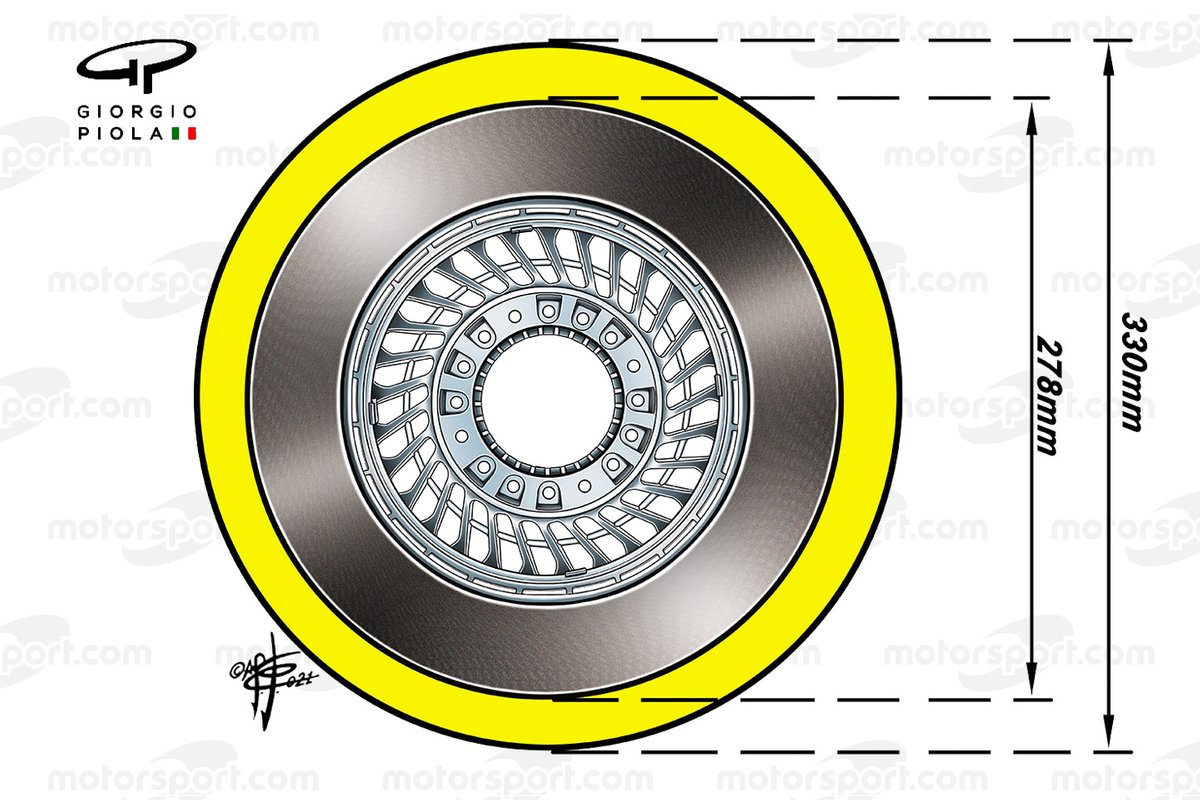
1/3
Photo by: Giorgio Piola
Pirelli tires on Sergio Perez’s Red Bull Racing RB15 Mule car 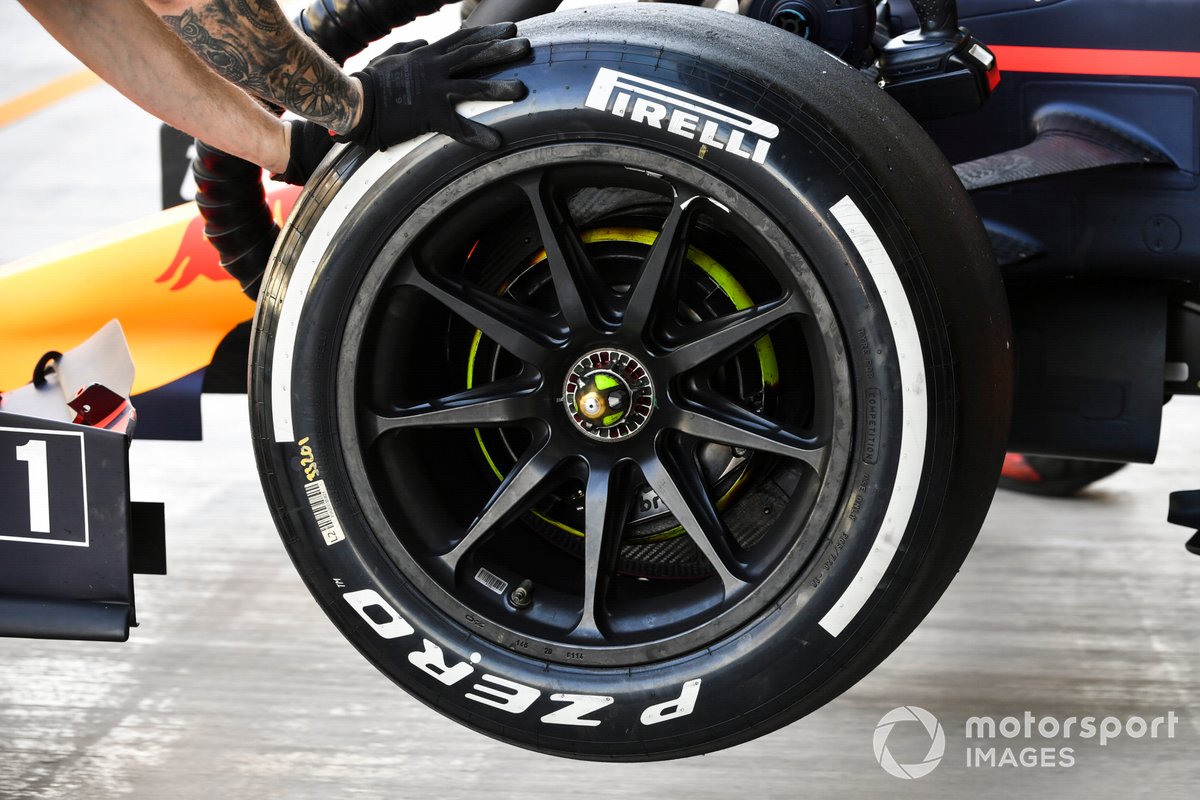
2/3
Photo by: Mark Sutton / Motorsport Images
Pirelli tires on the George Russell car, Mercedes W10 Mule 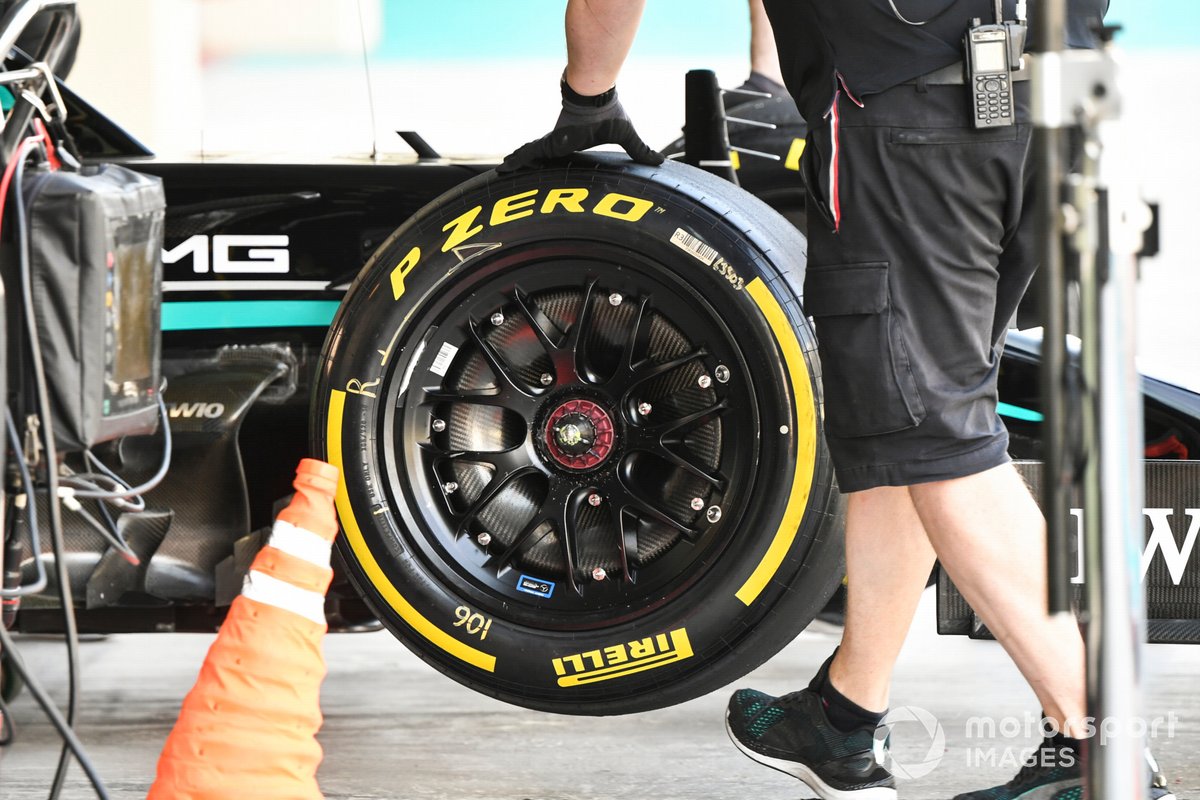
3/3
Photo by: Mark Sutton / Motorsport Images
Unimpeded access to aerodynamic rather than brake cooling solutions running through the assembly has been restricted as the brake discs (330mm instead of 278mm) and the brake drum itself also grow larger to accommodate the introduction of the 18” model. Rims and the greater well they create.
You’ll notice the difference between the brake drum size used on the RB15 mule car and the W10 mule car above, as Mercedes enlarged the brake drum while Red Bull chose to simply increase the size of the end fence.
Incidentally, all teams will receive the 18-inch rims from BBS in 2022 as the company won the bid to become F1’s standard supplier.
The end stop of the brake channel also increases in response to wheel arch size. In addition, the use of winglets, aside from the attached upper wake deflector and lower skirt, is also restricted.
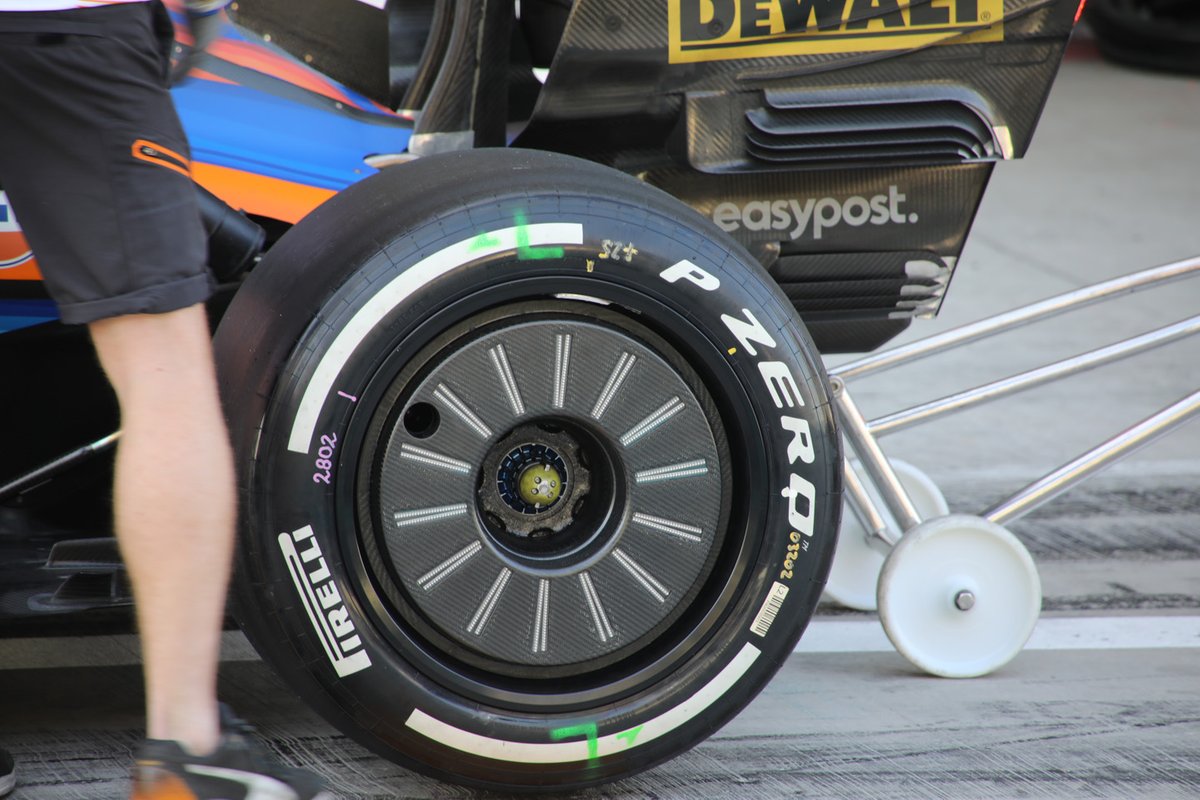
McLaren 2022 tire detail
Photo by: Giorgio Piola
Rim covers, which were banned from the sport in 2010, are also making a comeback on the outside of the wheel.
However, this time they have a consistent design and spin with the wheel instead of being static like most were in their previous guise.
The regulations also provide for a scoreboard on the rim covers to display information to spectators. It was a model of this that McLaren teased at the post-season test in Abu Dhabi.
suspension
Mercedes W12 bracket 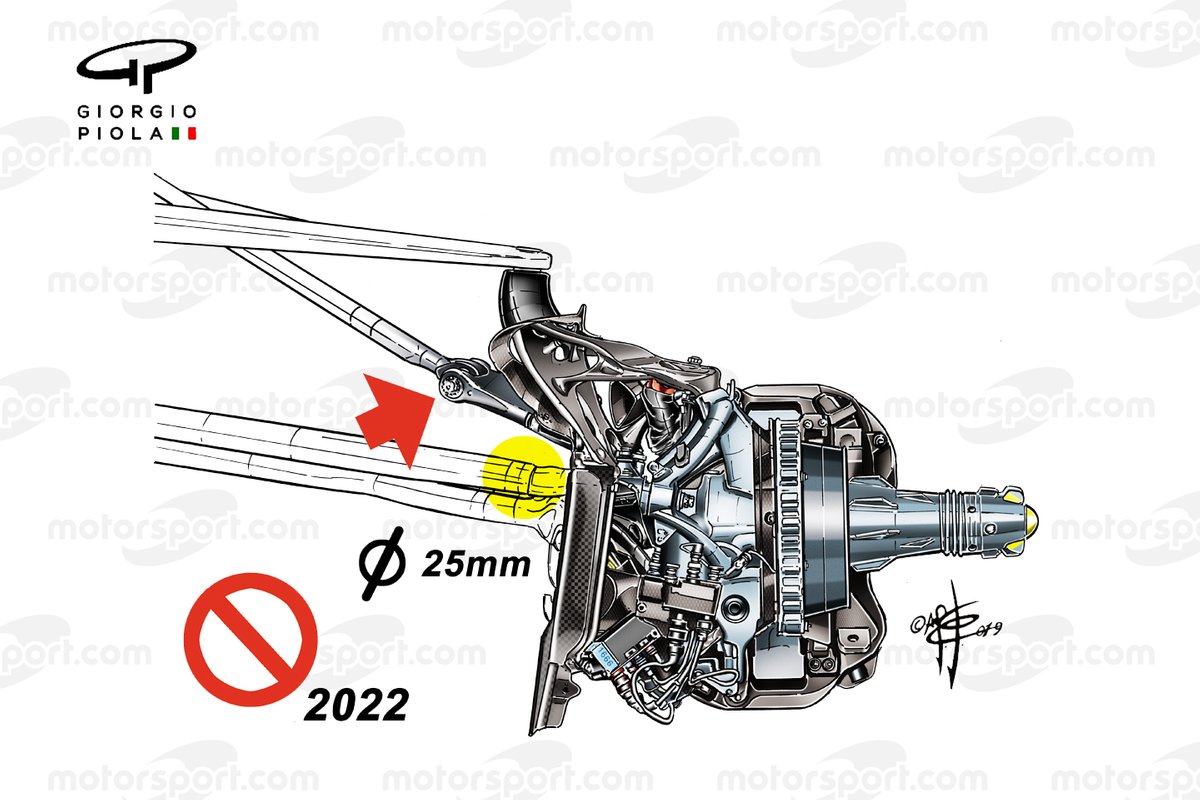
1/3
Photo by: Giorgio Piola
Mercedes W12 bracket detail, banned in 2022 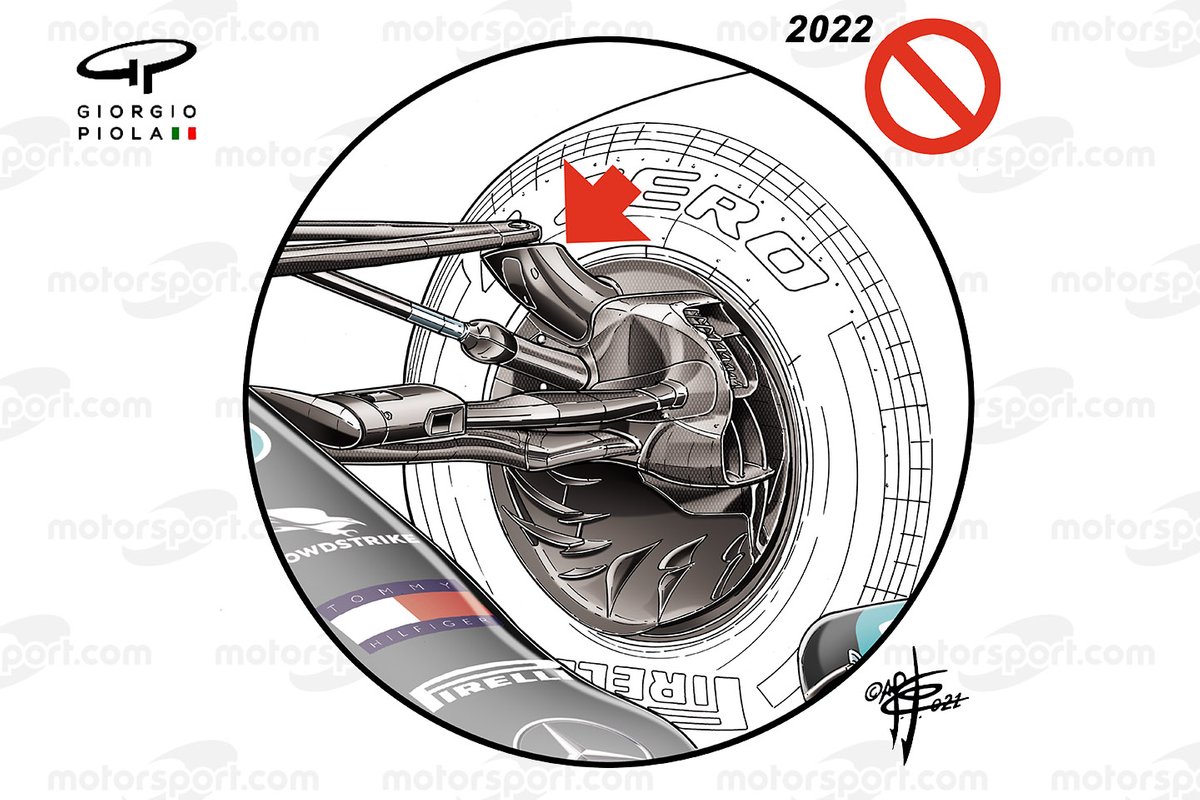
2/3
Photo by: Giorgio Piola
Mercedes W12 rear bracket 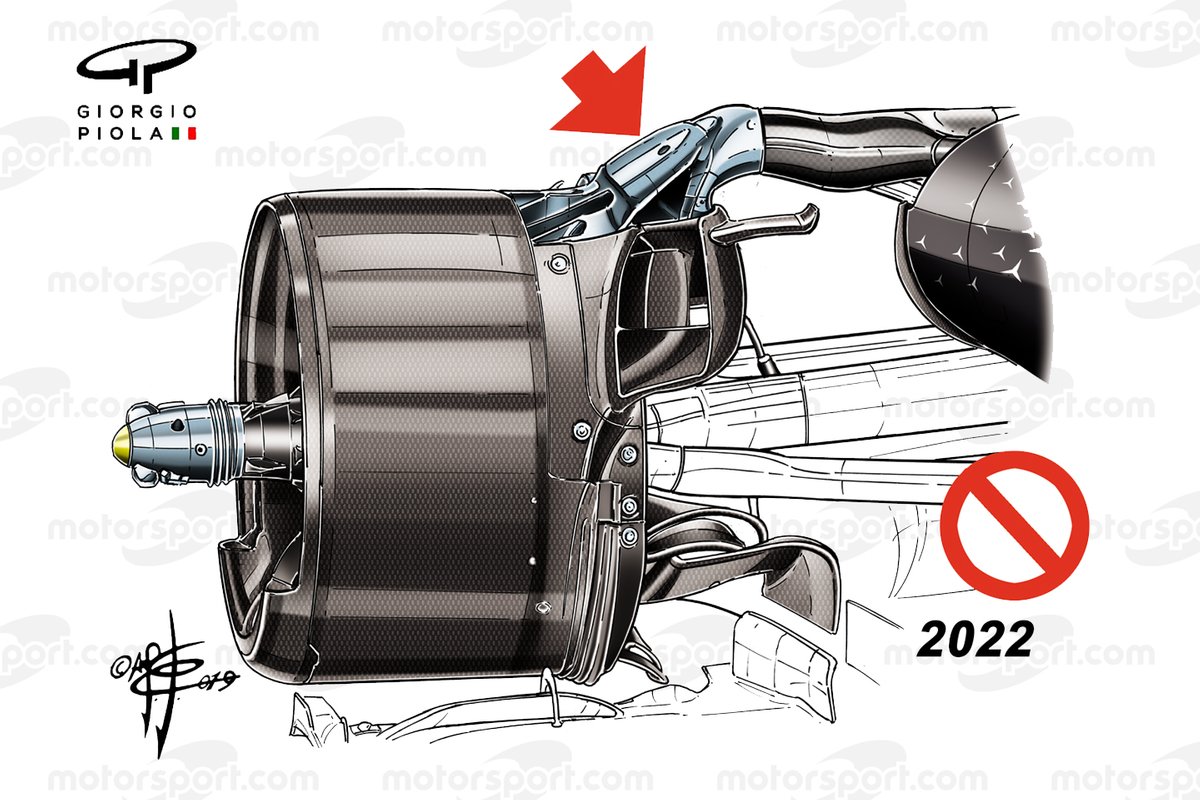
3/3
Photo by: Giorgio Piola
Teams will also need to revise their suspension designs as we return to a more classic sprung model, via springs and dampers rather than some of the hydraulic ancillaries used in the sport’s more recent past.
Many teams are also having to reconsider the outboard suspension design as the use of upright extensions and the extreme push rod on upright solutions has been banned.
As a result of these changes and the general changes to the car’s aerodynamic philosophy, it is plausible that some teams will return to using tie rod suspensions at the front of their cars.
The last time we saw this was in 2015 when Ferrari ended its three-year run on the layout.
body shift
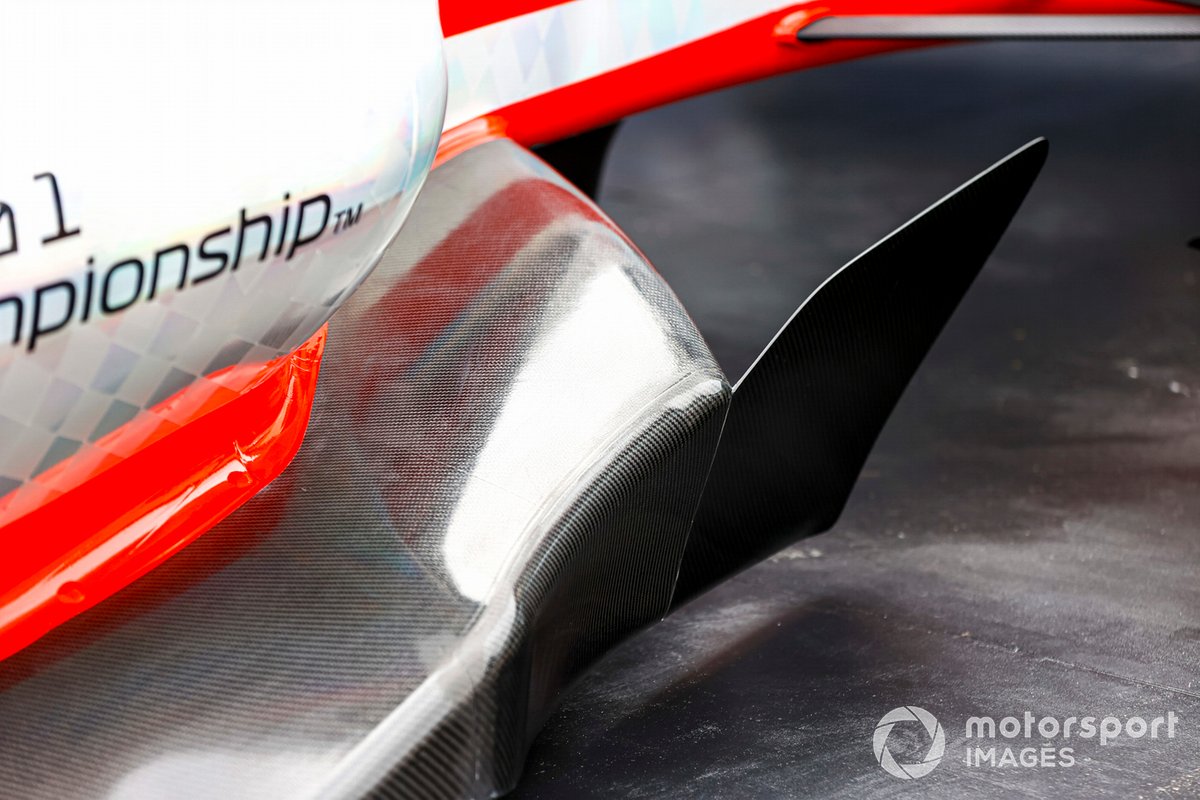
2022 F1 car
Photo by: Andy Hone / Motorsport Images
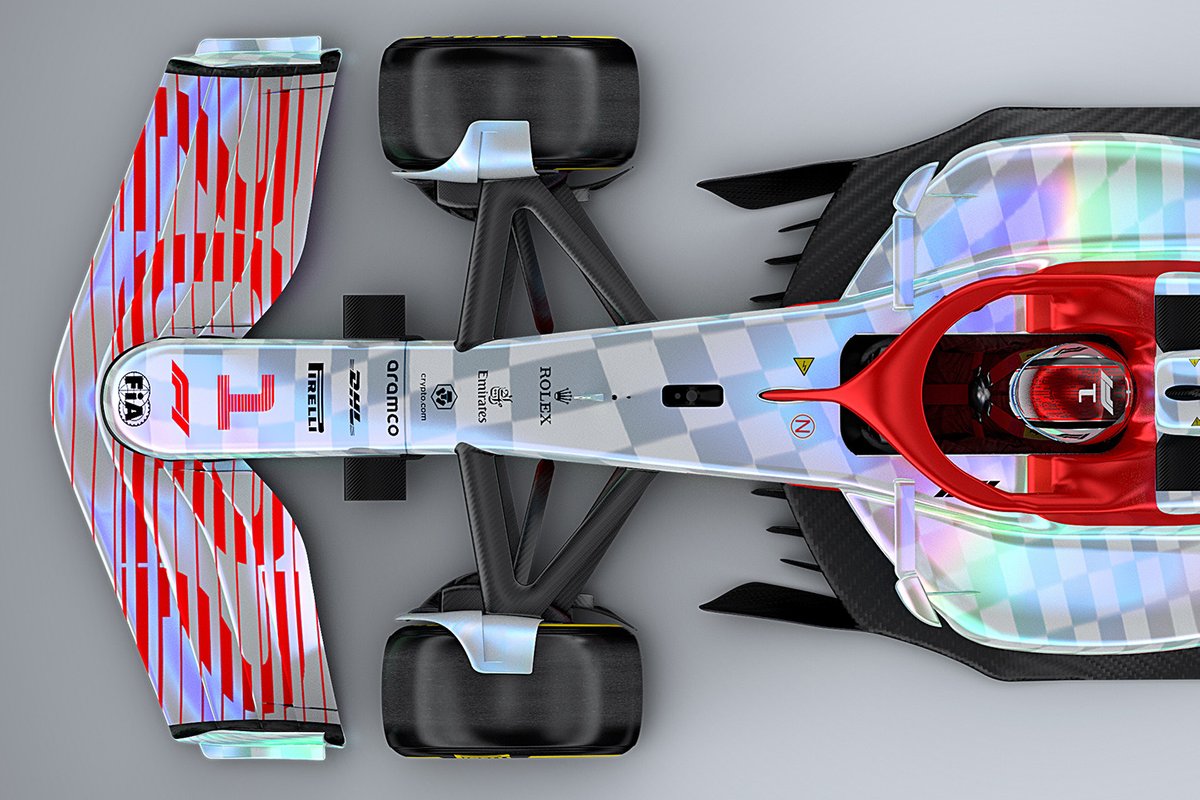
2022 F1 car
Photo by: Formula 1
As part of the aerodynamic overhaul and the focus on a more underbody-influenced design, as well as the simplification of the front and rear wings, the floor area also contributes more to the total downforce generated than in the previous vehicle generation.
The strengthening of the underbody has resulted in a different design of the front edge of the floor. This includes up to four fences and a perimeter wing, as well as getting rid of the bargeboard region in front of them.
Sidepod design will also look different in 2022 as the high intake used by all teams in 2021 and first introduced by Ferrari in 2017 will be much more difficult to manage.
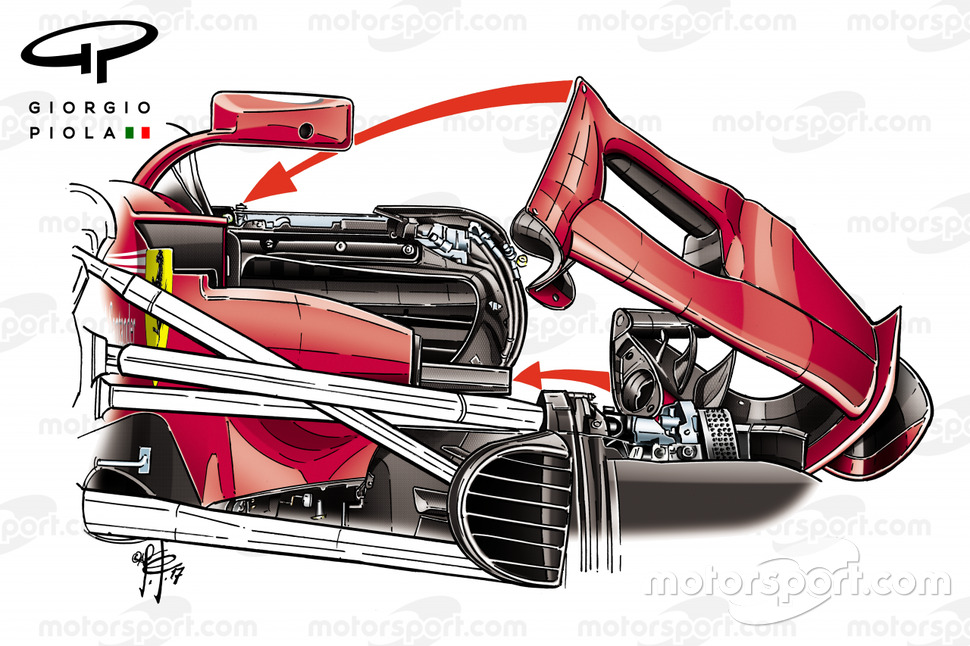
Ferrari SF70H side detail
Photo by: Giorgio Piola
This is because the top of the two SIPS (Side Impact Protection Spars) will need to be placed at least 60mm higher in 2022 than before. This reduces the box area where the side box inlet could be placed.
However, that’s not to say the teams actually found a solution that would continue to provide the same performance if they could place SIPS and inlets the same way they did before.
With so many changes to how the flow structures make their way from the front of the car to this point, it might have become redundant anyway. However, the rules have been adjusted to make it less likely to be used in any case.
Another change that could have a dramatic impact on the overall design of the sidepod and rear of the vehicle is the reintroduction of louvered body panels.

2022 F1 car
Photo by: Formula 1
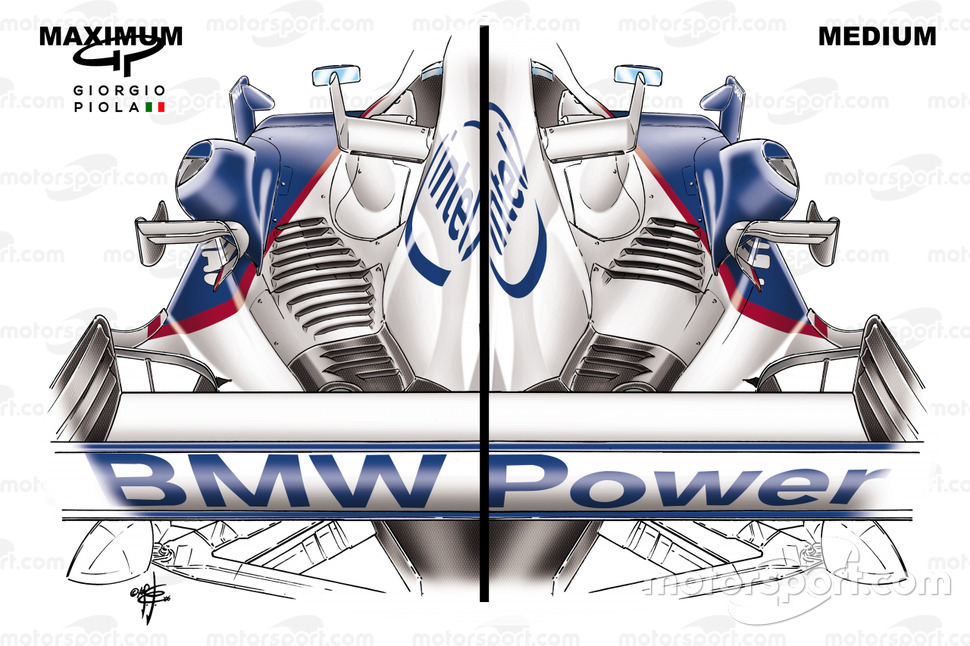
BMW Sauber F1.06 2006 Sidepod Fin Comparison
Photo by: Giorgio Piola
Using these to dissipate the heat generated by the powerplant and its ancillary components could lead to some interesting differences in the bodywork, depending on what the prevailing conditions are and what each track requires in terms of downforce.
This could also result in a much narrower region for Coke bottles in general when used as part of the consistent design portfolio. Numerous cooling and aerodynamic decisions will also be decisive elsewhere.
Raise the tail
At the rear of the car, the separate wastegate pipes have been done away with, with only a single, centrally located exhaust pipe used for the last 150mm.
In the meantime, this will leak out near another recurring feature, the underbeam wing, which will again form part of the rear wing structure and hasn’t been used since 2013.

The 2022 Formula 1 car launch event on the Silverstone grid. Diffuser and exhaust detail
Photo by: Mark Sutton / Motorsport Images
The beam wing can consist of two sections, the design of which will certainly vary from team to team, optionally with a gurney flap on the trailing edge of the top element.
The reintroduction could also give teams more freedom when it comes to the design of the rear fender pillars, whether structural or aerodynamic.
In terms of the overall design of the rear wing design, it’s a big departure from what we’ve seen before as the endplate creates a spiral shape as it merges with the flaps.
Whilst this obviously has interesting aesthetics, it also serves a function as the strength, shape and position of the tip vortex normally created by the wing is now significantly altered, with a consequent impact on the wake it creates affects.
Given the shape of the new rear wing, as well as its absence from the show car and the renderings produced by F1, you’d think DRS has been tossed aside too. It’s still there, however, and will continue to be part of the team’s design focus.
For those wondering how DRS might be applied given the shape of the rear wing, F1’s earlier wind tunnel model presentation gives an idea of how the flap could be hinged in the outer corner. However, this does not show the central actuator, pod and connection for which each team will have their own interpretation.
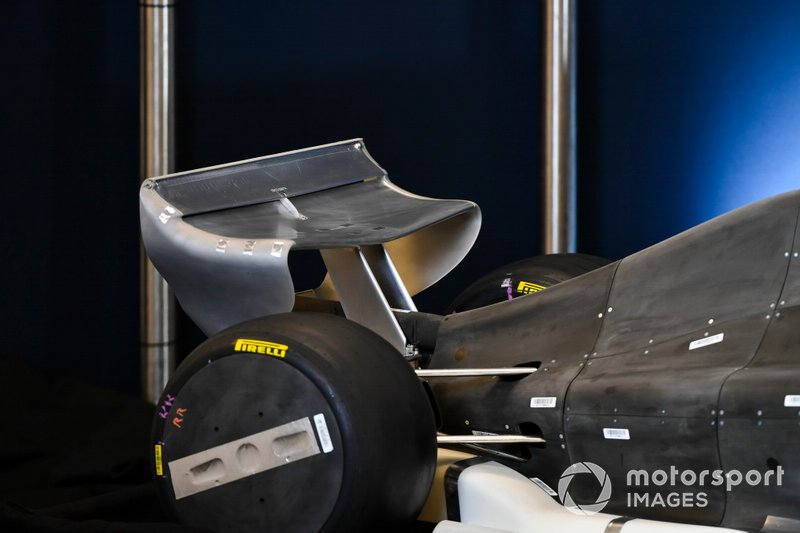
2021 F1 rules model
Photo by: Mark Sutton / Motorsport Images
Teams must also take into account the overall wheelbase of the car, adding a measurement to the regulations for the first time.
While this doesn’t dramatically decrease the length of cars from what has become the norm over the past decade, it does draw a line in the sand at 3600mm and prevent things from escalating any further.
Another aspect of the car that has increased over the past few decades is its weight, and unfortunately that hasn’t slowed down either. The minimum mass of the car is set at 795 kg in 2022, up from 752 kg last season.
It’s another hefty increase that accounts for the weight gain from the larger rims, tires, brake discs and brake lines, and provides additional headroom for the safety structures that require more demanding crash tests.
Did you miss our previous article...
https://formulaone.news/mclaren/gma-t33-is-gordon-murrays-new-25-million-gt-supercar

